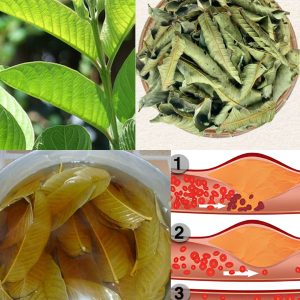
Among the seeds that have left their mark on the history of natural medicine, few are as versatile as cardamom. Exotic, aromatic, and with a rich, ancient past, this small pod holds secrets that modern science is only beginning to uncover.
According to a study published in Phytotherapy Research, regular consumption of cardamom may help regulate cholesterol levels, improve digestion, and boost overall metabolic health.
What Is Cardamom and Where Does It Come From?
Often referred to as the “queen of spices,” cardamom is a plant from the Zingiberaceae family, closely related to ginger. Its small green or black pods contain fragrant seeds that have been used for centuries in medicine, cooking, and perfumery.
Originally native to the dense forests of southern India, cardamom is now cultivated in countries such as Guatemala (the world’s largest exporter), Sri Lanka, and humid regions of the Middle East, where it’s commonly used in Arabic coffee.
There are two main types:
- Green cardamom (Elettaria cardamomum): Mild in flavor, ideal for culinary and therapeutic uses.
- Black cardamom (Amomum subulatum): Bolder and smokier, used more often for medicinal purposes in systems like Ayurveda.

Health Benefits and Properties of Cardamom
In recent decades, various studies have confirmed what traditional medicine has known all along: cardamom offers a wide range of health benefits. Its most notable properties include:
- Digestive aid: Helps ease digestion, relieves bloating, and alleviates mild constipation.
- Natural anti-inflammatory: Contains compounds such as cineole and terpineol.
- Antioxidant: Fights cellular oxidative stress.
- Mild diuretic: Helps reduce water retention.
- Antibacterial and antifungal: Useful for treating bad breath and minor oral infections.
- Heart health support: May help lower blood pressure and cholesterol levels.
Cardamom also shows promise in improving glucose metabolism, making it a potential ally in the prevention of type 2 diabetes.

What Is Cardamom Used For in Natural Medicine and Cooking?
Cardamom serves both healing and culinary purposes. In natural medicine, it’s valued for its ability to:
- Ease nausea
- Stimulate appetite
- Fight respiratory infections (thanks to its volatile oils)
In Ayurveda, it’s used to balance the doshas—especially Kapha—enhance digestive fire (“agni”), and detoxify the body. In Traditional Chinese Medicine, it’s considered a spleen stimulant and digestive tonic.
In the kitchen, you’ll find cardamom in:
- Relaxing teas and herbal infusions
- Milk-based desserts like rice pudding or kulfi
- Savory dishes such as curries, spiced rice, and stews
Its versatility makes it a star ingredient in everything from spiced Arabic coffee to nutritious banana bread.

How to Consume Cardamom to Maximize Its Benefits
To get the most out of its medicinal properties without overdoing it, it’s important to know how to consume cardamom correctly:
Common methods:
- Morning infusion: Boil 2–3 pods in water for 5–10 minutes. Can be combined with ginger or turmeric.
- Chewing the seeds: Freshens breath and aids digestion.
- Ground into powder: Add to smoothies, rice dishes, baked goods, or plant-based milks.
Suggested dosage:
- 1 to 3 grams daily (approximately 3–5 pods)
- Always start with a low dose to test for tolerance
Drinking cardamom tea on an empty stomach has been studied for its ability to stimulate digestion, activate metabolism, and reduce bloating.

Cardamom Side Effects and When to Avoid It
While generally safe, cardamom isn’t for everyone. Here are some precautions:
- Pregnancy and breastfeeding: Though not conclusively harmful, it’s best to avoid excessive intake.
- Active gastric ulcers: May increase stomach secretions and worsen symptoms.
- Allergies: Especially for those sensitive to ginger or similar spices.
- Medication interactions: Could enhance the effects of anticoagulants or blood pressure medications.
If you plan to take cardamom regularly as a supplement or natural remedy, consult a healthcare professional first.
Cardamom is much more than an aromatic spice — it’s an ancient capsule of wellness, flavor, and balance. Adding it to your daily routine can offer digestive, respiratory, and metabolic benefits. But like any natural remedy, it should be used mindfully — not just because it’s trendy.
Always check with a health professional before starting any alternative treatments, especially if you have chronic conditions or are on medication.




